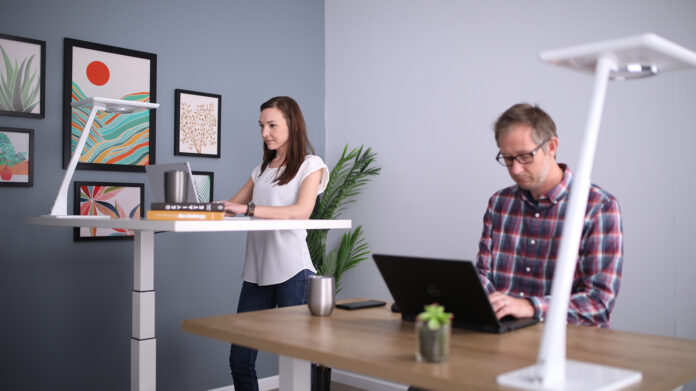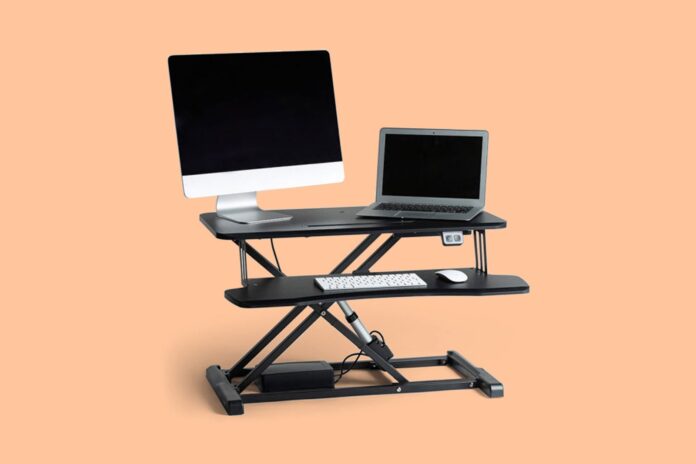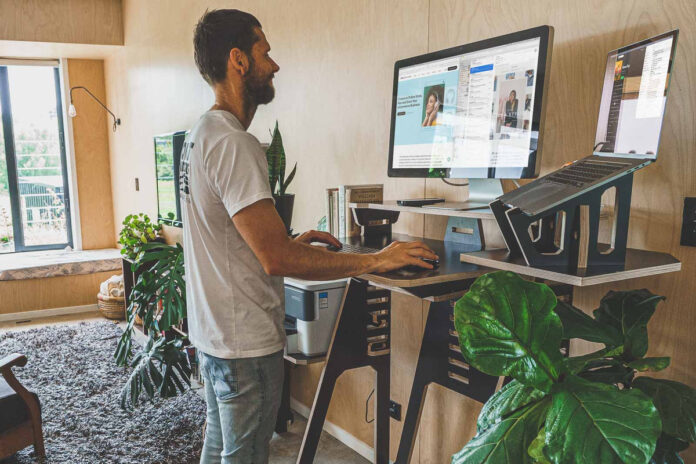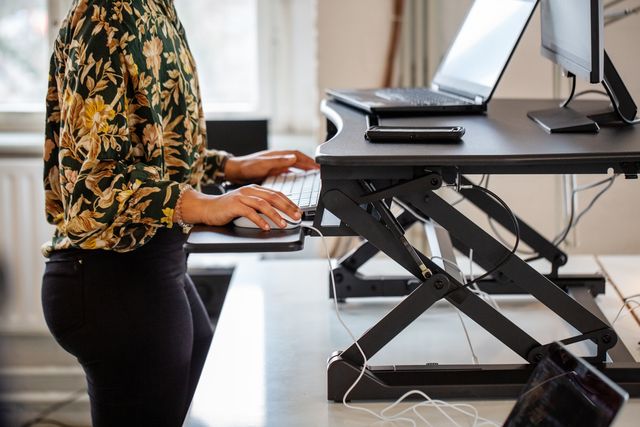Standing desks are increasing in popularity as people seek to incorporate more movement into the workday in order to improve their overall health and well-being. They have been touted as a way to improve posture, prevent fatigue, reduce stress, improve cognitive performance, and even promote weight loss.
But are these claims backed up by evidence? This guide will help you understand the potential benefits and drawbacks of standing desks so that you can decide if making this investment is worth it.
Benefits of Standing Desks

Studies have linked sitting for extended periods of time with health risks including an increased risk for type 2 diabetes, heart disease, and certain types of cancers. In contrast, using a standing desk can lead to improved posture and circulation as well as reduced back pains and neck strain.
They provide an alternate workspace that helps promote physical activity through exercise and movement throughout the day as opposed to consistent sitting. It has also been shown that switching between various forms of postures helps create an environment where people feel sharper mentally and more energized during their work hours.
If you are looking for a way to improve your overall health and work efficiency, then considering the use of a standing desk could be beneficial. Just remember to use it in moderation so that you don’t overexert yourself or cause further discomfort or injury by overworking your body.
What Are The Cons?

Although standup desks may have several benefits, there are a few drawbacks to be aware of before you make the switch.
First, once you make the commitment to standing while working, it almost cuts out the possibility of sitting down during the day completely. Everyone needs a break from time to time, and maintaining a stationary lifestyle can adversely affect your health.
Additionally, standing for long stretches of time can cause lower back pain, fatigue in feet and legs, ugly red marks on feet from ill-fitting shoes, poor circulation in feet and legs, and another injury if you don’t give yourself regular breaks from standing.
Second, they often require the purchase of specialized equipment like anti-fatigue floor mats or stability balls. You may also need an ergonomic workspace with adjustable monitors & keyboard trays in order to maintain proper posture while working at your desk for extended periods of time. The cost of all this extra equipment isn’t always feasible for small businesses or individuals on tight budgets.
Types of Standing Desks

When shopping for a standing desk, you’ll find a wide range of designs that cater to various kinds of workspace and user needs. Some are adjustable, some are motorized and others are manually operated. There are two main types of standing desks:
1. Fixed-Height Standing Desks:
They come in a variety of sizes and styles. They may include extra features such as drawers or shelves which can provide even more storage. The benefit to these desks is that they’re easy to customize with accessories like shelves and monitor arms, making them ideal for someone looking for more storage or ergonomic support.
If you plan on using the same workspace setup every day, this is a great option because it will remain consistent without value-adding extras like adjustable height.
2. Adjustable Height Standing Desks:
These models have become increasingly popular due to their flexibility in accommodating different user heights and varying workspace needs throughout the day. These types come with either an electric motor powered by a battery or traditional hand cranks which allow users to easily adjust the desk height.
Most models also feature programmable presets which make it easier to remember your most used settings, perfect for people who shift tasks frequently throughout their day or multiple users who share one desk space!
Cost Considerations

The cost of standing desks can range from hundreds to thousands of dollars and depends on the size, style, and features a person is looking for. The most important factor when choosing one is to determine how much space is needed. To save money, there are a few options people can consider when they are budgeting for their purchases.
One potential money-saving option is purchasing a riser that fits onto an existing desk or table, allowing the user to adjust the height by either standing or sitting with ease. These typically range from $50 to $200 depending on size and type.
Models made especially for standing will almost certainly require more of an investment but many offer some form of adjustment, allowing for sitting as well as standing which makes them versatile and therefore appealing if you’d like the opportunity to enjoy both anytime you, please.
Prices here can also vary depending on model and features but, in general, are much more expensive than riser desks with prices ranging between $350-$1000+.
Finally, ergonomic accessories such as anti-fatigue mats provide additional comfort when standing for long periods of time and pricing is somewhere between $25-$80+. Ultimately though it all comes down to personal preference and how much individuals feel personally inclined towards this type of furniture – if it makes sense within your lifestyle then it could be worth making an investment in these types of items!
Tips for Working at a Standing Desk

-Take short breaks as needed. As with any physical activity, make sure you take frequent breaks while working at a standing desk – this will help alleviate strain on muscles and joints and help prevent fatigue.
-Elevate your monitor correctly. Make sure your monitor is properly positioned so that it is comfortable to look at without straining your neck or eyes – typically slightly above eye level is optimal.
-Stretch daily. It’s important to keep your muscles warm and flexible while working at a standing desk in order to prevent musculoskeletal injuries like lower back pain or tension headaches; doing simple stretches throughout the day can help keep muscles relaxed and avoid discomfort.
Conclusion
In conclusion, there are many potential benefits of using a standing desk, but it’s important to note that these may or may not be felt by each individual user.
If you’re interested in reducing sitting time and potentially improving certain aspects of your health, then a standing desk could be the right choice for you.
However, it’s important to evaluate any existing physical conditions or limitations before investing in a standing desk. Ultimately, the decision is based on personal preference and whatever goals an individual has for their health and well-being.







